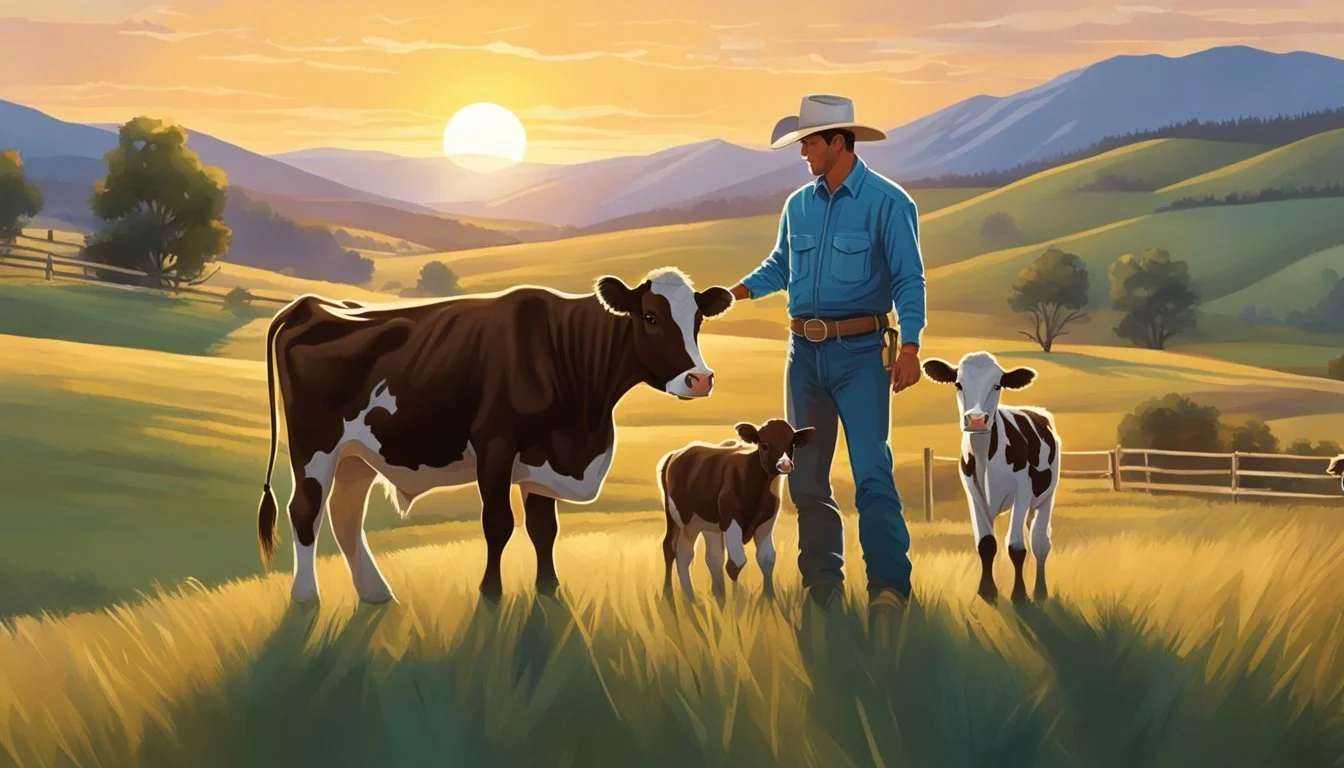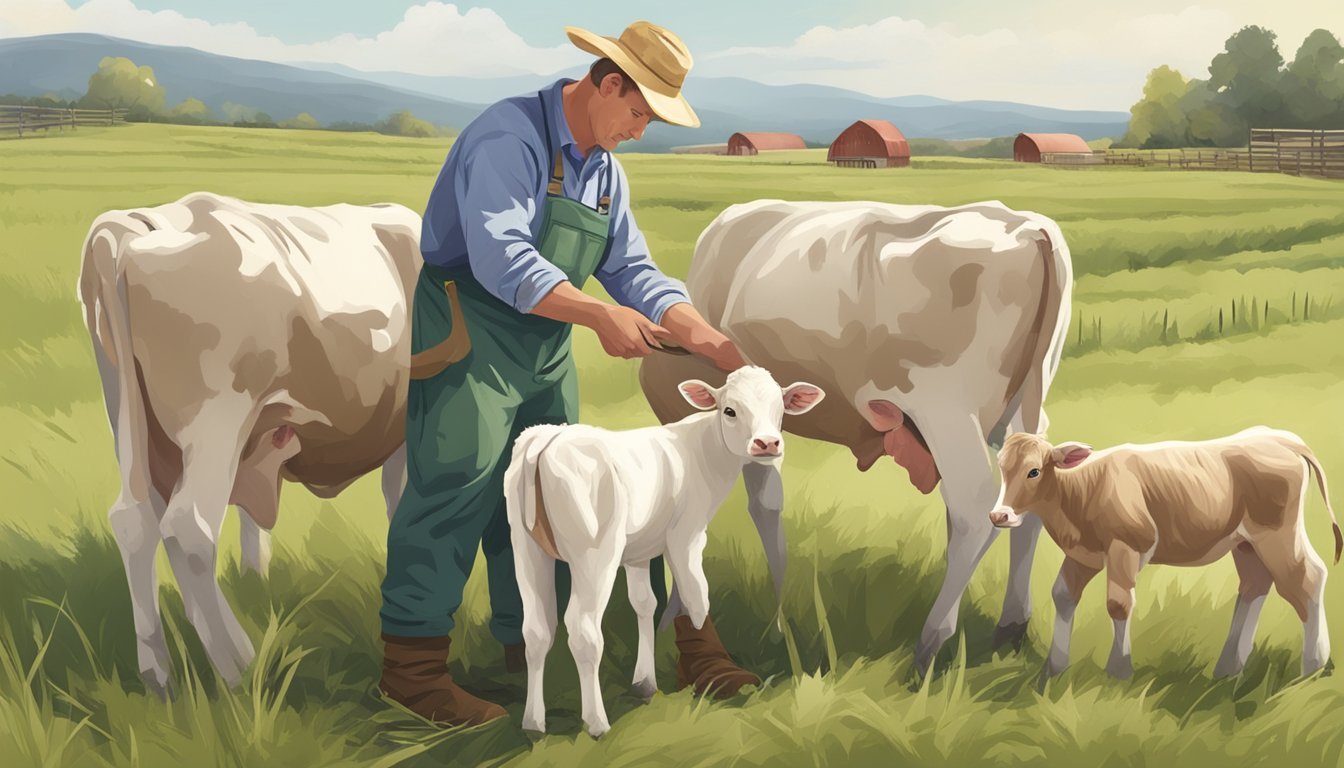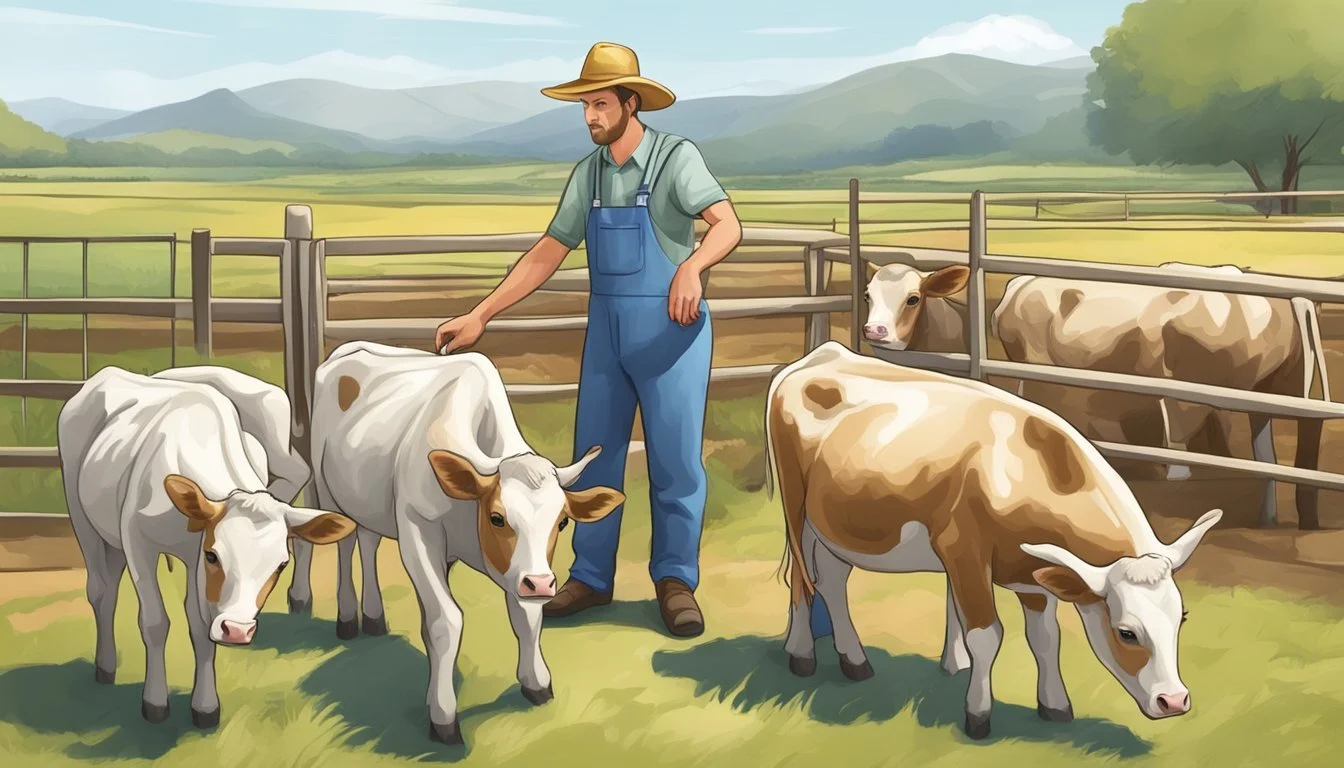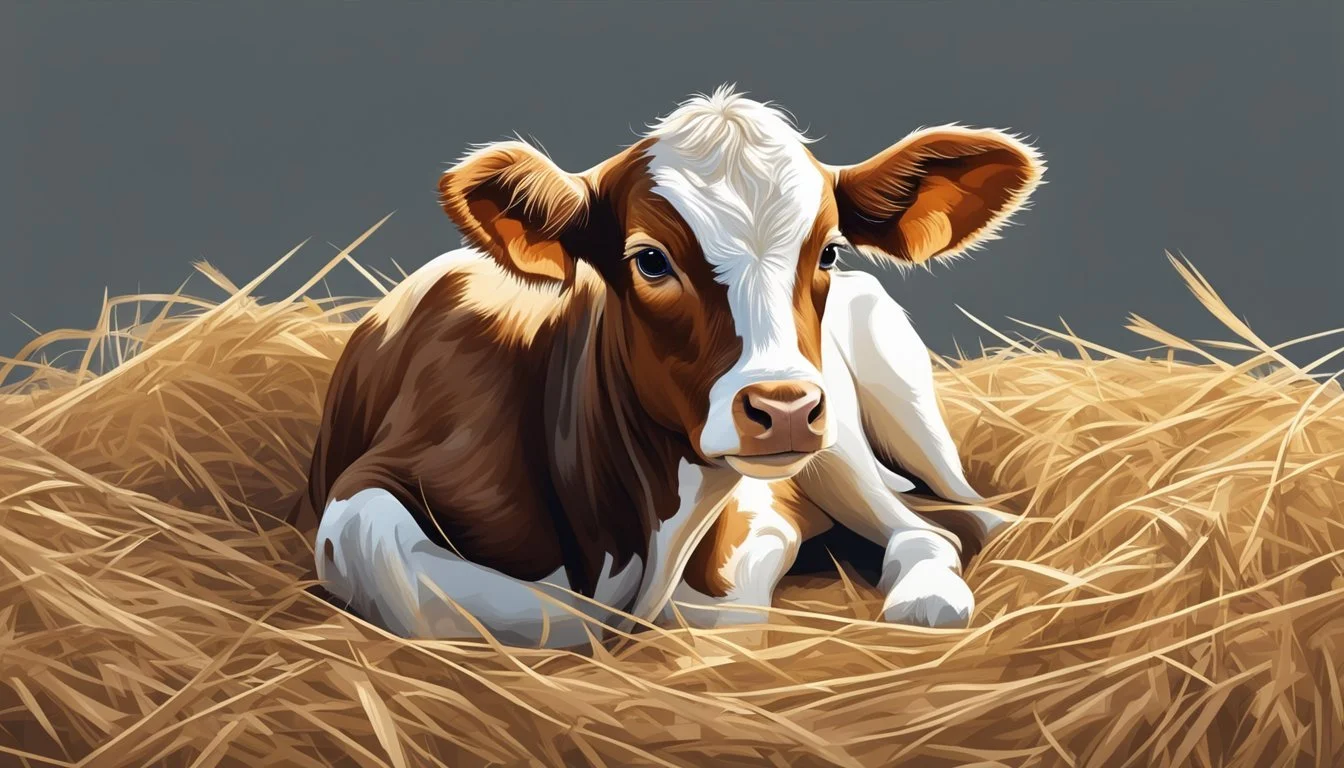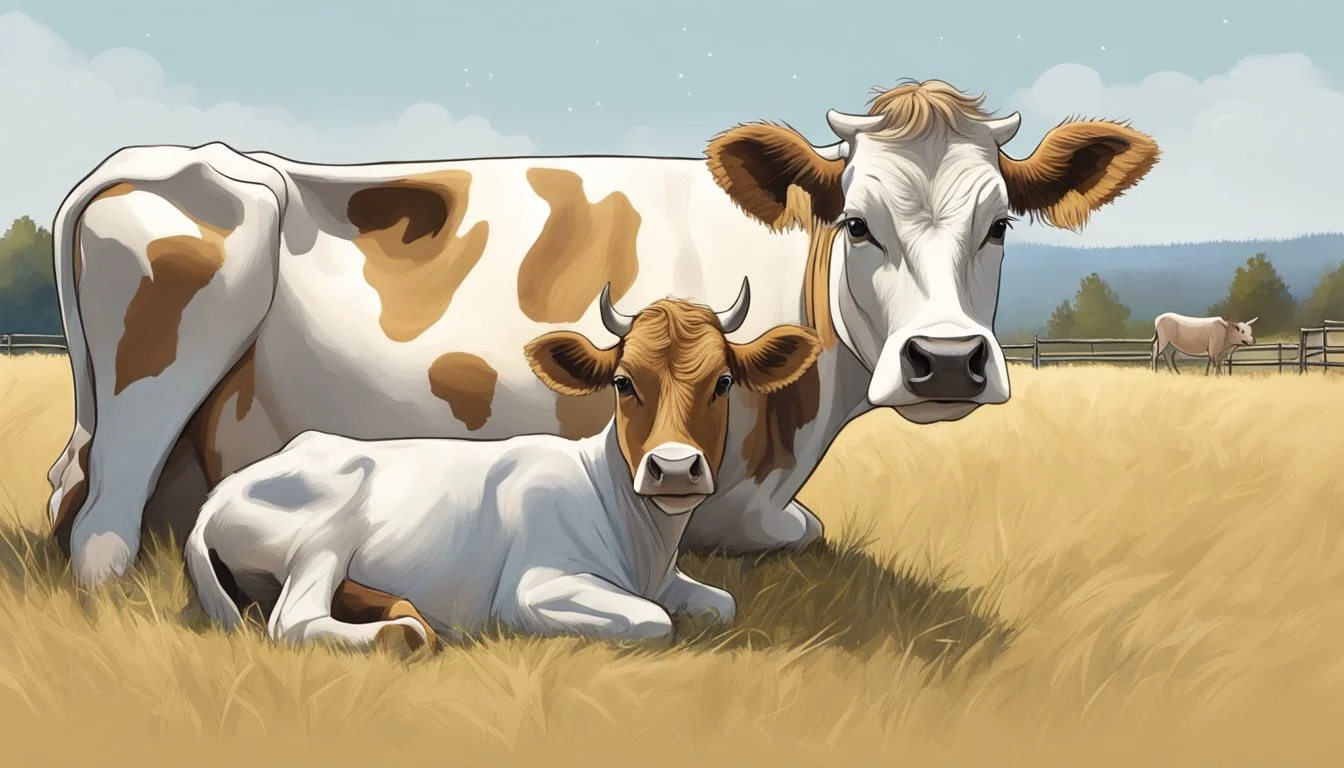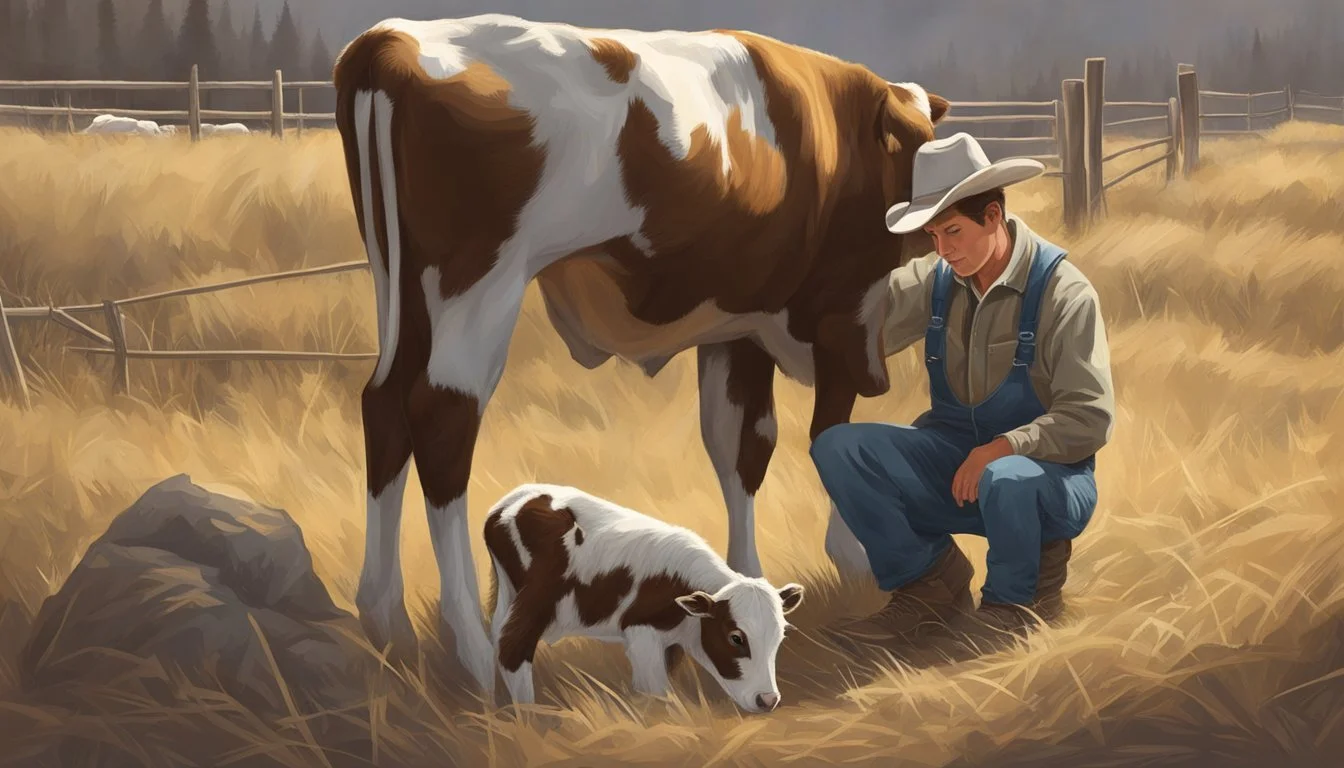How do I manage calving and care for newborn calves
Essential Practices for Healthy Livestock
Managing calving and ensuring the well-being of newborn calves are critical components of successful cattle farming. The calving process and subsequent care set the foundation for a calf's future growth, health, and productivity. Proper management during this time can significantly affect the mortality rates of calves and the long-term profitability of a herd. It entails details such as timely feedings, maintaining sanitation, and monitoring calf health, particularly during the first few critical days of life.
Calves are most vulnerable immediately after birth. They require specific nutrition, protection from environmental stressors, and careful monitoring to prevent and address health issues. For instance, feeding baby calves 10% of their birthweight daily in milk ensures they receive adequate nutrition for optimal growth. It's equally important to administer colostrum within the first few hours of life to equip the calves with necessary antibodies.
Calf care extends beyond feeding to include practices such as maintaining a dry and warm environment, disease prevention protocols, and ensuring they receive essential vaccinations. Professional assistance and well-informed livestock management play vital roles in successful calving and calf-rearing, impacting the health status of both the calves and the mother cows through measures like assistance by technical personnel and appropriate colostrum management. With strategic management, farmers can safeguard their investment through the crucial early stages of their calves' lives.
Understanding Calving
Effective management of calving is pivotal for cattle health and farm economics. The process of parturition in cattle is a natural yet complex event that requires careful observation to ensure the health of both the cow and the calf.
Stages of Parturition
The calving process, or parturition, is commonly divided into three distinct stages. In Stage One, the cow's body prepares for delivery with the onset of uterine contractions, which may not be immediately visible. This stage generally lasts for 2 to 6 hours. Stage Two begins with the physical appearance of the calf's feet and ends with the calf's birth, typically taking between one and two hours. The final stage, Stage Three, involves the expulsion of the placenta and usually concludes within 12 hours postpartum.
Recognizing Signs of Calving
Cattle producers should be familiar with the behavioral and physical signs that indicate a cow is close to calving. As calving nears, the cow may become restless, isolate herself, and show signs of abdominal discomfort. Physically, the animal's vulva will swell, and there may be a discharge of mucus. Frequent observation is crucial as these signals can herald labor within hours. Recognizing these symptoms early is also essential in managing dystocia, or difficult calving, which can require intervention to safeguard the health of cow and calf, particularly during the peak of the calving season when multiple animals may require assistance.
Preparing for Calving
Proper preparation is crucial for a successful calving season. Farmers must ensure that calving supplies are readily available, and environments are sanitized to provide a healthy start for newborn calves.
Calving Supplies Checklist
To be prepared for calving, one needs a comprehensive calving supplies checklist that includes:
Iodine solution for navel disinfection to prevent infection
Clean obstetrical gloves for assisting with deliveries
Calving chains and handles, ensuring they are disinfected
Colostrum or colostrum replacer to feed the newborn calf immediately after birth, as outlined on The Essential Calving Toolkit: Preparing with a Complete Supplies Checklist
Thermometer to monitor the health of calves
A calf puller, if necessary
A well-prepared calving kit can reduce stress and increase the chance of successful birthing outcomes.
Creating a Sanitized Environment
Sanitizing calving areas is critical to control the spread of disease and facilitate a healthy start for the calf. Key practices include:
Cleaning calving pens with appropriate disinfectants, especially between births
Providing ample bedding to keep the area dry and comfortable, reducing the risk of disease as highlighted in Planning Ahead for Newborn Calf Processing - Livestock
Ensuring good ventilation in the calving area to reduce moisture and pathogens in the air, which is vital for calf health
Installing proper lighting to assist with nighttime calving and regular check-ups on the animals
Creating a clean and controlled environment can dramatically reduce the incidence of calving complications and foster the welfare of both cow and calf.
Managing Newborn Calves
The management of newborn calves is critical to their survival and future productivity. Attention to detail during the immediate post-calving care, the assessment and assistance with dystocia, and the correct use of calving equipment can significantly impact the welfare and viability of the calf.
Immediate Post-Calving Care
Once a calf is born, immediate care is essential. Newborn calves should be gently dried with a towel to prevent chilling. The patting should also stimulate breathing. If a calf does not begin breathing promptly or seems weak, artificial respiration may be required. Calves should also be placed in a clean, dry area, preferably with bedding. Ensuring that the calf receives colostrum promptly, within the first few hours, provides essential nutrients and antibodies.
Dry the calf: Use towels to stimulate blood circulation and drying.
Stimulate breathing: If necessary, clear the nasal passages and apply artificial respiration techniques.
Feed colostrum: Ensure the calf receives the first milk for immunity.
Identifying and Assisting with Dystocia
Dystocia, or difficult birth, represents a significant threat to both calf and cow. It is crucial to monitor for signs of dystocia such as excessive straining without progress or abnormal calf presentation. If dystocia occurs, a quick response is necessary, and one may need to provide assistance, either manually or with a veterinarian's help. Knowing when to intervene can prevent prolonged labor, which is detrimental to the health of the cow and the survival of the calf.
Monitor labor: Look for signs of distress or prolonged labor.
Assess the calf's position: Check for proper presentation and posture.
Decide on intervention: Assist manually or seek veterinary assistance if needed.
Using Calving Equipment
In some cases, using calving equipment is warranted to assist with the delivery process. It is important that any equipment such as calf pullers is used with care, following the manufacturer’s instructions to avoid injury to both calf and cow. Calving equipment should be disinfected before and after use to prevent the spread of infection. A clean, lukewarm water bath for the calf puller and clean, sanitized gloves for the handlers are among the best practices.
Calving assistance tools: Use calf pullers and chains correctly.
Sanitize equipment: Prevent infections by thoroughly disinfecting all tools.
Gentle handling: Ensure to apply steady, gentle force to avoid injury to the calf and cow.
Ensuring Proper Nutrition
Proper nutrition is the cornerstone of neonatal calf health, facilitating optimal growth and development. The initial hours post-birth are particularly critical for establishing a solid nutritional foundation.
Colostrum Feeding Protocols
Colostrum, the first milk from a cow post-calving, is rich in antibodies and is pivotal for building the calf's immunity. Calves should consume colostrum within the first 2 hours of life, amounting to 10% of their body weight. For example, a calf weighing 40 kilograms should be fed 4 liters of colostrum. It's also essential to feed high-quality colostrum again at 12 hours post-birth to maximize antibody absorption.
Assessing Colostrum Quality
The quality of colostrum is variable and can be assessed using tools like a brix refractometer or a colostrometer. These tools measure the colostrum's antibody concentration, ensuring the calf receives adequate immunoglobulins. A brix refractometer reading of 22% or higher typically indicates good colostrum, whereas a colostrometer will float in the green zone when colostrum quality is high.
Nutritional Supplements
In addition to colostrum, calves may require nutritional supplements to secure necessary protein, energy, nutrients, and minerals for their growth. Milk replacers and colostrum replacers, specifically formulated to meet a calf's dietary needs, can be used if high-quality natural colostrum is not available. These products should mimic the nutritional profile of natural colostrum and be introduced following the colostrum feeding protocol.
When choosing supplements, one should ensure they have the right balance of protein and energy and that they contain essential vitamins and minerals. Proper supplementation supports overall calf health and aids in the development of a sturdy immune system.
Health Management
In managing the health of newborn calves, farmers must prioritize preventive measures such as vaccination and consistent health monitoring to ensure early detection and intervention in the face of common health challenges.
Vaccination and Disease Prevention
Vaccinating calves is crucial for establishing a strong immune system and providing immunity against prevalent diseases. A vaccination program should be tailored to the specific pathogens prevalent in the region and should aim to stimulate the calf's immune system to produce antibodies. For example, vaccinations against E. coli, coronavirus, and rotavirus can prevent severe cases of scours, a common and potentially fatal calf diarrhea.
Recommended Vaccinations:
At birth: Colostrum intake within the first hours, high in natural antibodies
According to risk: Vaccines for specific pathogens like E. coli, coronavirus, and rotavirus
Monitoring Calf Health
Regular monitoring of calf health is imperative to detect early signs of illness. Calves should be observed daily for any changes in behavior, appetite, and physical appearance. Key indicators of health to monitor include:
Activity level: Lethargy may indicate illness.
Feeding pattern: Irregular feeding can be a sign of health issues.
Physical signs: Check for clear eyes, a shiny coat, and normal feces.
Calves displaying abnormal signs should be examined promptly to determine the cause and start appropriate treatment.
Addressing Common Health Challenges
Calves are susceptible to various health challenges, but with rapid and appropriate responses, such issues can often be managed effectively. Diseases like scours, caused by bacteria and viruses, are common in the early weeks of life. Treatment protocols and supportive care for scours might include:
Rehydration: Administering electrolytes to prevent dehydration.
Nutrition: Ensuring calves continue to receive adequate milk or milk replacer.
Preventive measures and immediate treatment are key in managing calves' health to prevent the spread of disease and to promote a thriving start to life.
Monitoring Growth and Development
In the management of calving and care for newborn calves, monitoring growth and development is crucial to ensure the young animals meet their milestones. This involves tracking their physical changes, adjusting their nutrition, and maintaining optimal health statuses.
Tracking Weight and Body Condition
It is essential to regularly measure and record weight and body condition score to assess a calf's growth pattern. Weight should be checked at least once a month, allowing early identification of any growth issues. Body condition score is a subjective assessment, yet it gives valuable insights into the calf's physical state, indicating whether the diet provides sufficient nutrients.
Weekly Weight Tracking Table:
Week 1: ---
Week 2: ---
Week 3: ---
Week 4: ---
Monthly Body Condition Score (1-5 Scale):
Month 1: ---
Month 2: ---
Month 3: ---
Adjusting Feed Quantities and Quality
To support optimal growth, the quantity and quality of feed should reflect the nutritional requirements at different growth stages. If a calf's weight gain does not align with the expected growth curve, it may be necessary to modify the diet. For example, increasing the quantity of milk or milk replacer for those falling behind in weight and adjusting the concentration of nutrients in the feed to support health and development. Similarly, if the cow's body condition score begins to drop significantly, the calf's feeding program must be evaluated to ensure both the cow and calf are supported nutritionally.
Caring for the Calf's Environment
The immediate environment of a newborn calf is crucial to its health and survival. From ensuring proper bedding to providing adequate ventilation, each aspect plays a pivotal role in fostering a safe and clean space for the calf to thrive.
Optimizing Bedding and Shelter
Bedding is essential for both comfort and hygiene. Newborn calves should be housed on dry, clean, and comfortable bedding. Materials like straw or wood shavings are often preferred because they are absorbent and provide good insulation against cold and dampness. It's important to regularly remove soiled bedding to prevent the growth of pathogens. With the right bedding, the risk of diseases diminishes, creating a nurturing environment for the calf.
Preferred Bedding Materials
Straw
Wood shavings
Peat moss
Bedding Maintenance
Daily: Check and remove wet or soiled areas.
Weekly: Replace bedding entirely with fresh materials.
Shelters should be draft-free yet well-ventilated, warm, and dry to protect calves from adverse weather conditions. Individual calf hutches or pens are typically used to separate calves and curb disease spread.
Ensuring Adequate Ventilation
Proper ventilation is critical in maintaining a calf's health. It helps to remove excess moisture, manure gases, and pathogens from the calf's living environment. Ventilation systems should ensure a constant supply of fresh air, without creating drafts that could chill the calves. Natural ventilation can be utilized through strategically placed openings and adjusted according to the weather conditions to make sure the air quality within the shelter remains at an optimal level.
Ventilation Techniques
Adjustable windows or vents for air circulation
Fans to facilitate air movement, particularly in warmer or more humid climates
Cleaning and disinfection routines should be established to keep the calf's living area sanitary. Regularly disinfecting the shelter and feeding equipment minimizes the risk of infection and illness.
By closely monitoring and managing the bedding and shelter, coupled with optimized ventilation, farmers can significantly improve the living conditions for newborn calves, leading to better health outcomes and overall wellbeing.
Feeding and Weaning Strategies
Effective calf rearing requires careful attention to feeding regimes and weaning processes to ensure optimal health and rumen development for young cattle. Strategic nutritional planning can mitigate risks of digestive disorders while transitioning calves from milk to solid feed.
Transitioning from Milk to Solid Feed
Calves typically begin life consuming milk or a milk replacer, which provides the essential nutrients for early growth. As they mature, the gradual introduction of solid feed is critical for the development of the rumen. Calves must get adequate nutrition during this phase to establish the foundation for a healthy digestive system. Implementing a step-by-step plan that includes high-quality starter feed can facilitate this transition. Starter feed should contain a balance of proteins, fibers, vitamins, and minerals suited for a developing calf.
At around four to six weeks of age, they should consistently consume solid feed, which encourages rumen development and prepares them for weaning. Weaning can usually commence once calves are consuming 2-2.5% of their body weight in dry feed over a period of a few days.
Preventing Digestive Disorders
When transitioning to solid feed, it's imperative to prevent digestive disorders such as acidosis. This condition can occur if calves consume too much starch-rich feed quickly, leading to a sudden drop in rumen pH. Preventative measures include:
Ensuring a gradual increase in the quantity of grain and limit the inclusion of highly fermentable carbohydrates.
Providing consistent access to clean water to help regulate the rumen environment.
Monitoring animal behavior and manure consistency as indicators of digestive health.
The practice of feeding smaller, more frequent meals can also help as it ensures a steady intake of feed, reducing the risk of overconsumption at any one time. Adequate fiber in the diet is critical for rumen development and function. It promotes cud-chewing and saliva production, which naturally buffers rumen pH.
Special Considerations
When managing calving and caring for newborn calves, certain scenarios require particular attention and knowledge. These include best practices for handling orphaned calves and understanding the different management strategies for dairy and beef calves.
Dealing with Orphaned Calves
Orphaned calves are a challenge that requires immediate and compassionate care. They lack maternal support, which means caregivers must quickly step in to fulfill nutrition and warmth needs. Bottle feeding is a common method to feed orphaned calves, using milk replacer that is specially formulated to provide a balance of proteins, fats, vitamins, and minerals. When a calf is unable to suckle or is too weak, an esophageal tube feeder may be employed to ensure the calf receives essential colostrum within the first few hours of life. This early intervention is critical for the calf's survival and long-term health.
Raising Dairy vs. Beef Calves
The approach to raising calves varies significantly between dairy and beef operations. Dairy calves are often separated from their mothers within the first few days to manage the milk production for human consumption. They are typically bottle-fed and sometimes transitioned to group housing where they continue to receive milk replacer. The goal with dairy calves is to introduce solid feeds and wean them off milk efficiently, preparing them for a future in milk production.
In contrast, beef cattle calves often remain with their mothers for an extended period, benefiting from natural milk and learning grazing behaviors. The focus is on growth and weight gain, necessary for producing quality meat. While beef calves do nurse from their mothers, some may still require supplemental bottle feeding if the mother can't produce enough milk or if they are twins and the mother is unable to care for both effectively.
Conclusion
Managing the birth and subsequent care of newborn calves is critical to their survival and long-term vigour. Careful attention must be given from the moment of birth, ensuring that calves receive colostrum promptly to establish early immunity. Adequate feeding following colostrum intake, with either whole milk or appropriate milk replacer, supports their growth and health during the vital first months.
Essential Management Practices:
Feeding 10% of birth body weight in colostrum within the first few hours.
Ensuring clean, dry bedding to minimize disease risk.
Maintaining detailed health and feeding records.
Calving management also encompasses active monitoring of dams for signs of labor, facilitating a safe birthing process, and possibly intervening when complications arise. Immediate care, including navel dipping with iodine solution, minimizes the chance of infections and provides a strong start for the calf.
They recommend dealing with any detected health issues with urgency, as prompt intervention can prevent further complications. Understanding and implementing current best practices in newborn calf care and calving management, such as those outlined in resources like Feeding and Managing Baby Calves or in detailed manuals like Calving Management and Newborn Calf Care, lay a foundation for productive lives of future livestock.
By equipping themselves with the right knowledge and resources, breeders can ensure their calves have the robust start needed to thrive.

